Radiotherapy for neovascular age-related macular degeneration
- PMID: 32844399
- PMCID: PMC8812340
- DOI: 10.1002/14651858.CD004004.pub4
Radiotherapy for neovascular age-related macular degeneration
Abstract
Background: Radiotherapy has been proposed as a treatment for new vessel growth in people with neovascular age-related macular degeneration (AMD).
Objectives: To examine the effects of radiotherapy on neovascular AMD.
Search methods: We searched CENTRAL, MEDLINE, Embase, LILACS and three trials registers and checked references of included studies. We last searched the databases on 4 May 2020. SELECTION CRITERIA: We included all randomised controlled trials in which radiotherapy was compared to another treatment, sham treatment, low dosage irradiation or no treatment in people with choroidal neovascularisation (CNV) secondary to AMD.
Data collection and analysis: We used standard procedures expected by Cochrane. We graded the certainty of the evidence using GRADE. We considered the following outcomes at 12 months: best-corrected visual acuity (BCVA) (loss of 3 or more lines, change in visual acuity), contrast sensitivity, new vessel growth, quality of life and adverse effects at any time point. MAIN RESULTS: We included 18 studies (n = 2430 people, 2432 eyes) of radiation therapy with dosages ranging from 7.5 to 24 Gy. These studies mainly took place in Europe and North America but two studies were from Japan and one multicentre study included sites in South America. Three of these studies investigated brachytherapy (plaque and epimacular), the rest were studies of external beam radiotherapy (EBM) including one trial of stereotactic radiotherapy. Four studies compared radiotherapy combined with anti-vascular endothelial growth factor (anti-VEGF) with anti-VEGF alone. Eleven studies gave no radiotherapy treatment to the control group; five studies used sham irradiation; and one study used very low-dose irradiation (1 Gy). One study used a mixture of sham irradiation and no treatment. Fifteen studies were judged to be at high risk of bias in one or more domains. Radiotherapy versus no radiotherapy There may be little or no difference in loss of 3 lines of vision at 12 months in eyes treated with radiotherapy compared with no radiotherapy (risk ratio (RR) 0.82, 95% confidence interval (CI) 0.64 to 1.04, 811 eyes, 8 studies, I2 = 66%, low-certainty evidence). Low-certainty evidence suggests a small benefit in change in visual acuity (mean difference (MD) -0.10 logMAR, 95% CI -0.17 to -0.03; eyes = 883; studies = 10) and average contrast sensitivity at 12 months (MD 0.15 log units, 95% CI 0.05 to 0.25; eyes = 267; studies = 2). Growth of new vessels (largely change in CNV size) was variably reported and It was not possible to produce a summary estimate of this outcome. The studies were small with imprecise estimates and there was no consistent pattern to the study results (very low-certainty evidence). Quality of life was only reported in one study of 199 people; there was no clear difference between treatment and control groups (low-certainty evidence). Low-certainty evidence was available on adverse effects from eight of 14 studies. Seven studies reported on radiation retinopathy and/or neuropathy. Five of these studies reported no radiation-associated adverse effects. One study of 88 eyes reported one case of possible radiation retinopathy. One study of 74 eyes graded retinal abnormalities in some detail and found that 72% of participants who had radiation compared with 71% of participants in the control group had retinal abnormalities resembling radiation retinopathy or choroidopathy. Four studies reported cataract surgery or progression: events were generally few with no consistent evidence of any increased occurrence in the radiation group. One study noted transient disturbance of the precorneal tear film but there was no evidence from the other two studies that reported dry eye of any increased risk with radiation therapy. None of the participants received anti-VEGF injections. Radiotherapy combined with anti-VEGF versus anti-VEGF alone People receiving radiotherapy/anti-VEGF were probably more likely to lose 3 or more lines of BCVA at 12 months compared with anti-VEGF alone (RR 2.11, 95% CI 1.40 to 3.17, 1050 eyes, 3 studies, moderate-certainty). Most of the data for this outcome come from two studies of epimacular brachytherapy (114 events) compared with 20 events from the one trial of EBM. Data on change in BCVA were heterogenous (I2 = 82%). Individual study results ranged from a small difference of -0.03 logMAR in favour of radiotherapy/anti-VEGF to a difference of 0.13 logMAR in favour of anti-VEGF alone (low-certainty evidence). The effect differed depending on how the radiotherapy was delivered (test for interaction P = 0.0007). Epimacular brachytherapy was associated with worse visual outcomes (MD 0.10 logMAR, 95% CI 0.05 to 0.15, 820 eyes, 2 studies) compared with EBM (MD -0.03 logMAR, 95% CI -0.09 to 0.03, 252 eyes, 2 studies). None of the included studies reported contrast sensitivity or quality of life. Growth of new vessels (largely change in CNV size) was variably reported in three studies (803 eyes). It was not possible to produce a summary estimate and there was no consistent pattern to the study results (very low-certainty evidence). For adverse outcomes, variable results were reported in the four studies. In three studies reports of adverse events were low and no radiation-associated adverse events were reported. In one study of epimacular brachytherapy there was a higher proportion of ocular adverse events (54%) compared to the anti-VEGF alone (18%). The majority of these adverse events were cataract. Overall 5% of the treatment group had radiation device-related adverse events (17 cases); 10 of these cases were radiation retinopathy. There were differences in average number of injections given between the four studies (1072 eyes). In three of the four studies, the anti-VEGF alone group on average received more injections (moderate-certainty evidence).
Authors' conclusions: The evidence is uncertain regarding the use of radiotherapy for neovascular AMD. Most studies took place before the routine use of anti-VEGF, and before the development of modern radiotherapy techniques such as stereotactic radiotherapy. Visual outcomes with epimacular brachytherapy are likely to be worse, with an increased risk of adverse events, probably related to vitrectomy. The role of stereotactic radiotherapy combined with anti-VEGF is currently uncertain. Further research on radiotherapy for neovascular AMD may not be justified until current ongoing studies have reported their results.
Trial registration: ClinicalTrials.gov NCT00454389 NCT01016873 NCT01006538 NCT01213082 NCT01833325.
Copyright © 2020 The Cochrane Collaboration. Published by John Wiley & Sons, Ltd.
Conflict of interest statement
JE: none known CI: none known TJ was a principal investigator and/or lead author in the CABERNET, MERLOT, MERITAGE and INTREPID studies. He leads an NIHR funded trial of the Oraya device. His employer received research payments for participants enrolled in commercial clinical trials of radiation devices used to treat wet AMD, and research grants or free use of radiation devices for investigator‐initiated clinical trials of wet AMD. He is a consultant to Opthea and iLumens. VC is consultant of Quantel Medical and is an employee of Boehringer Ingelheim. This publication expresses the opinion of the author (VC) and is not endorsed by Boehringer Ingelheim.
Figures
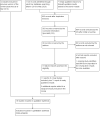

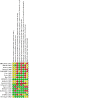
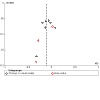
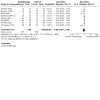

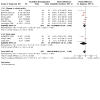

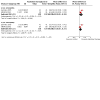


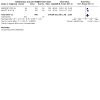
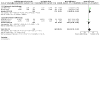

Update of
-
Radiotherapy for neovascular age-related macular degeneration.Cochrane Database Syst Rev. 2010 May 12;2010(5):CD004004. doi: 10.1002/14651858.CD004004.pub3. Cochrane Database Syst Rev. 2010. Update in: Cochrane Database Syst Rev. 2020 Aug 26;8:CD004004. doi: 10.1002/14651858.CD004004.pub4. PMID: 20464726 Free PMC article. Updated.
References
References to studies included in this review
AMDLRTSG 2003 {published data only}
-
- Treatment of Age-related Macular Degeneration with Low-dose Radiation Therapy Study Group. The results of randomized controlled trial of low-dose radiation for wet-type age-related macular degeneration on a 1-year term basis. Nippon Ganka Gakkai Zasshi 2003;107(6):326-30. - PubMed
AMDRT 2004 {published data only}
-
- Marcus DM, Peskin E, Maguire M, Weissgold D, Alexander J, Fine S, et al The AMDRT Research Group. The age-related macular degeneration radiotherapy trials (AMDRT): one year results from a pilot study. American Journal of Ophthalmology 2004;138(5):818-28. - PubMed
Anders 1998 {published data only}
-
- Anders N, Stahl H, Dorn A, Walkow T, Hosten N, Wust P, et al. Radiotherapy of exudative senile macular degeneration. A prospective controlled study [Strahlentherapie der exsudativen altersabhangigen Makuladegeneration. Eine prospektive kontrollierte Studie]. Ophthalmologe 1998;95(11):760-4. - PubMed
Bergink 1998 {published data only}
-
- Bergink GJ, Hoyng CB, Van der Maazen RW, Vingerling JR, Daal WA, Deutman AF. A randomised controlled trial of efficacy of radiation therapy in the control of subfoveal neovascularisation in age-related macular degeneration: radiation verses observation. Graefe's Archive for Clinical and Experimental Ophthalmology 1998;236(5):321-5. - PubMed
-
- Hoyng CB, Tromp AI, Meulendijks CFM, Leys A, Maazen RWM, Deutman AF, et al. Side effects after radiotherapy of age-related macular degeneration with the Nijmegen technique. Graefe's Archive for Clinical and Experimental Ophthalmology 2002;240(5):337-41. - PubMed
CABERNET 2013 {published data only}
-
- Dugel PU, Bebchuk JD, Nau J, Reichel E, Singer M, Barak A, et al. Epimacular brachytherapy for neovascular age-related macular degeneration: a randomized, controlled trial (CABERNET). Ophthalmology 2013;120(2):317-27. - PubMed
-
- Jackson TL, Dugel PU, Bebchuk JD, Smith KR, Petrarca R, Slakter JS, et al. Epimacular brachytherapy for neovascular age-related macular degeneration (CABERNET): Fluorescein angiography and optical coherence tomography. Ophthalmology 2013;120(2):1597-603. - PubMed
Char 1999 {published data only}
-
- Char DH, Irvine AI, Posner MD, Quivey J, Phillips TL, Kroll S. Randomised trial of radiation for age-related macular degeneration. American Journal of Ophthalmology 1999;127(5):574-8. - PubMed
Ciulla 2002 {published data only}
-
- Ciulla TA, Danis RP, Klein SB, Malinovsky VE, Soni PS, Pratt LM, et al. Proton therapy for exudative age-related macular degeneration: a randomized, sham-controlled clinical trial. American Journal of Ophthalmology 2002;134(6):905-6. - PubMed
Eter 2002 {published data only}
-
- Eter N, Schuller H, Spitznas M. Radiotherapy for age-related macular degeneration: is there a benefit for classic CNV? International Ophthalmology 2002;24(1):13-9. - PubMed
INTREPID 2013 {published data only}
-
- Freiberg FJ, Michels S, Muldrew A, Slakter J, O'Shaughnessy D, Czeszynski A et al. Microvascular abnormalities secondary to radiation therapy in neovascular age-related macular degeneration: findings from the INTREPID clinical trial. British Journal of Ophthalmology 2019;103(4):459-74. - PubMed
-
- Jackson TL, Chakravarthy U, Kaiser PK, Slakter JS, Jan E, Bandello F, et al. Stereotactic radiotherapy for neovascular age-related macular degeneration: 52-week safety and efficacy results of the INTREPID study. Ophthalmology 2013;120(9):1893-900. - PubMed
-
- Jackson TL, Chakravarthy U, Slakter JS, Muldrew A, Shusterman EM, O'Shaughnessy D, et al. Stereotactic radiotherapy for neovascular age-related macular degeneration: year 2 results of the INTREPID study. Ophthalmology 2015;122(1):138-45. - PubMed
-
- Jackson TL, Dugel PU, Bebchuk JD, Smith KR, Petrarca R, Slakter JS, et al The CABERNET Study Group. Epimacular brachytherapy for neovascular age-related macular degeneration (CABERNET) fluorescein angiography and optical coherence tomography. Ophthalmology 2013;120(9):1597-1603. - PubMed
-
- Jackson TL, Shusterman EM, Arnoldussen M, Chell E, Wang K, Moshfeghi DM, et al. Stereotactic radiotherapy for wet age-related macular degeneration (INTREPID): influence of baseline characteristics on clinical response. Retina 2015;35(2):194-204. - PubMed
Jaakkola 2005 {published data only}
-
- Jaakkola A, Heikkonen J, Tommila P, Laatikainen L, Immonen I. Strontium plaque brachytherapy for exudative age-related macular degeneration: three-year results of a randomized study. Ophthalmology 2005;112(4):567-73. - PubMed
Kacperek 2001 {published data only}
-
- Kacperek A, Briggs M, Sheen M, Damato BE, Errington RD, Harding S. Macular degeneration treatment at Clatterbridge Centre for oncology: treatment and preliminary results. Physica Medica 2001;17(Suppl 3):7-9.
Kobayashi 2000 {published data only}
-
- Kobayashi H, Kobayashi K. Age-related macular degeneration: long-term results of radiotherapy for subfoveal neovascular membranes. American Journal of Ophthalmology 2000;130(5):617-35. - PubMed
Marcus 2001 {published data only}
-
- Marcus DM, Camp MW, Sheils WC, McIntosh SB, Leibach DB, Johnson MH, et al. Sham radiation in clinical trials assessing radiotherapy for exudative age-related macular degeneration. Retina 1999;19(6):525-30. - PubMed
-
- Marcus DM, Sheils C, Johnson MH, McIntosh SB, Leibach DB, Maguire A, et al. External beam irradiation of subfoveal choroidal neovascularisation complicating age-related macular degeneration. Archives of Ophthalmology 2001;1(19):171-80. - PubMed
MERLOT 2016 {published data only}
-
- Jackson TL, Desai R, Simpson A, Neffendorf JE, Petrarca R, Smith K, et al The Macular Epiretinal Brachytherapy versus Ranibizumab (Lucentis) Only Treatment (MERLOT) Study Group. Epimacular brachytherapy for previously treated neovascular age-related macular degeneration (MERLOT): a phase 3 randomized controlled trial. Ophthalmology 2016;123(6):1287-96. - PubMed
-
- Jackson TL, Soare C, Petrarca C, Simpson A, Neffendorf JE, Petrarca R, et al. Evaluation of month-24 efficacy and safety of epimacular brachytherapy for previously treated neovascular age-related macular degeneration: the MERLOT randomized clinical trial. JAMA Ophthalmology 2020;138(8):1-8. - PMC - PubMed
Osmanovic 2017 {published data only}
-
- Lu J, Daftari I, Mishra K, Moshiri A, Park SS. Changes in subretinal hyperreflective material in phase I/II study of proton beam irradiation combined with anti-VEGF therapy for exudative age-related macular degeneration. Investigative Ophthalmology and Visual Science 2017;58(8):ARVO E-abstract 4831.
-
- NCT01213082. Prospective trial of proton beam combined with anti-VEGF therapy for exudative age-related macular degeneration (AMD) (PBAMD2). clinicaltrials.gov/ct2/show/NCT01213082 (first received 1 October 2010).
-
- Osmanovic S, Moisseiev E, Mishra KK, Daftari I, Moshiri A, Morse L, et al. Phase I/II randomized study of proton beam with anti-vascular endothelial growth factor for exudative age-related macular degeneration: one-year results. Ophthalmology Retina 2017;1(3):217-26. - PubMed
-
- Wong S, Daftari I, Mishra K, Migacz J V, Gorczynska I, Moshiri A et al. Fluorescein and OCT angiographic evaluation of choroidal neovascular membrane following proton beam and intravitreal anti-VEGF therapy for exudative AMD: 2-year follow up. Investigative Ophthalmology and Visual Science 2017;58(8):ARVO E-abstract 370.
RAD 1999 {published data only}
-
- Bellmann C, Unnebrink K, Rubin GS, Miller D, Holz FG. Visual acuity and contrast sensitivity in patients with neovascular age-related macular degeneration. Results from the Radiation Therapy for Age-Related Macular Degeneration (RAD-) Study. Graefe's Archive for Clinical and Experimental Ophthalmology 2003;241(12):968-74. - PubMed
-
- Holz FG, Unnebrink K, Staudt S, Voelcker HE, Wannenmacher M, Bellmann C, et al. Two-years results of a prospective, randomized, double-blind multicenter trial on radiation therapy for neovascular ARMD. American Academy of Ophthalmology 2000:115.
-
- Holz FG, Voelcker HE, Engenhart-Cabillic R, Bellmann C, Unnebrink K, Debus J, et al. A prospective randomized, controlled, double-blind multicenter trial on radiation therapy for subfoveal CNV secondary to ARMD. American Academy of Ophthalmology 1999:247-8.
-
- The Radiation Therapy for Age-Related Macular Degeneration (RAD) Group. A prospective, randomised, double-masked trial on radiation therapy for neovascular age-related macular degeneration. Ophthalmology 1999;106(12):2239-47. - PubMed
-
- Vacha P, Debus J, Wiegel T, Schuchardt U, Schaefer U, Engenhart-Cabillic R. A prospective randomized, double-blind multicenter-trial on radiation therapy for neovascular age-related macular degeneration. European Journal of Cancer 2001;37:275 (A1015).
SFRADS 2002 {published data only}
-
- Hart PM, Chakravarthy U, Mackenzie G, Chisholm IH, Bird AC, Stevenson MR, et al. Visual outcomes in the subfoveal radiotherapy study: a randomized controlled trial of teletherapy for age-related macular degeneration. Archives of Ophthalmology 2002;120(8):1029-38. - PubMed
Valmaggia 2002 {published data only}
-
- Valmaggia C, Ries G, Ballinari P. A 5-year follow-up study for distance visual acuity after low dose radiation on subfoveal choroidal neovascularization in age-related macular degeneration. Documenta Ophthalmologica 2001;103(3):201-9. - PubMed
-
- Valmaggia C, Ries G, Ballinari P. Radiotherapy for subfoveal choroidal neovascularization in age-related macular degeneration: a randomized clinical trial. American Journal of Ophthalmology 2002;133(4):521-9. - PubMed
References to studies excluded from this review
Avila 2009 {published data only}
-
- Avila MP, Farah ME, Santos A, Duprat JP, Woodward BW, Nau J. Twelve-month short-term safety and visual-acuity results from a multicentre prospective study of epiretinal strontium-90 brachytherapy with bevacizumab for the treatment of subfoveal choroidal neovascularisation secondary to age-related macular degeneration. British Journal of Ophthalmology 2009;93(3):305-9. - PubMed
Barak 2005 {published data only}
-
- Barak A, Hauser D, Yipp P, Morse L, Leigh B, Kubo D, et al. A phase I trial of stereotactic external beam radiation for subfoveal choroidal neovascular membranes in age-related macular degeneration. British Journal of Radiology 2005;78(933):827-31. - PubMed
Bergink 1995 {published data only}
-
- Bergink GJ, Deutman AF, Van Den Broek JECM, Van Daal WAJ, Van Der Maazen RMW. Radiation therapy for age-related subfoveal choroidal neovascular membranes. Documenta Ophthalmologica 1995;90(1):67-74. - PubMed
Brown 1997 {published data only}
-
- Brown GC, Freire JE, Vander J, Brady LW, Shields CL, Shields JA, et al. Strontium-90 brachytherapy for exudative, age related macular degeneration: a pilot study. International Journal of Radiation Oncology, Biology, Physics 1997;39(2, Suppl 1):332 (A2184).
Churei 2004 {published data only}
-
- Churei H, Ohkubo K, Nakajo M, Hokotate H, Baba Y, Ideue J, et al. External-beam radiation therapy for age-related macular degeneration: Two years' follow-up results at a total dose of 20 Gy in 10 fractions. Radiation Medicine 2004;22(6):398-404. - PubMed
Eter 2001 {published data only}
-
- Eter N, Schuller H. External beam radiotherapy for age-related macular degeneration causes transient objective changes in tear-film function. Graefe's Archive for Clinical and Experimental Ophthalmology 2001;239(12):923-6. - PubMed
Friedrichsen 1996 {published data only}
-
- Friedrichsen EJ, Slater JD, Hagele JE, Chan CK, Yonemoto LT, Garcia C A, et al. Proton beam irradiation of subfoveal choroidal neovascularization: a pilot study of single-dose 800 cGy and 1400 cGy. American Academy of Ophthalmology 1996:135.
Heier 2008 {published data only}
-
- Heier JS, Farah M, Duprat JP, Avila M, Fujii GY, Rossi J, et al. A study to evaluate the safety and feasibility of radiotherapy and bevacizumab (Avastin) for the treatment of subfoveal choroidal neovascularization (CNV) secondary to age-related macular degeneration (AMD). The Macular Society 2008:186.
Honjo 1997 {published data only}
-
- Honjo M, Mandai M, Hiroshiba N, Miyamoto H, Takahashi M, Ogura Y, et al. Evaluation of the early-phase response of neovascular membrane in age-related macular degeneration to low-dose radiation. Japanese Journal of Clinical Ophthalmology 1997;51(9):1563-9.
Jackson 2012 {published data only}
Mandai 1998 {published data only}
-
- Mandai M, Takahashi M, Miyamoto H, Hiroshiba N, Kimura H, Ogura Y, et al. Long term effects of radiation treatment for age-related macular degeneration. Japanese Journal of Clinical Ophthalmology 1998;52:567-71. - PubMed
Mandai 2000 {published data only}
-
- Mandai M, Takahashi M, Miyamoto H, Hiroshiba N, Kimura H, Ogura Y, et al. Long-term outcome after radiation therapy for subfoveal choroidal neovascularization associated with age-related macular degeneration. Japanese Journal of Ophthalmology 2000;44(5):530-7. - PubMed
Marcus 2004 {published data only}
Matsuhashi 1996 {published data only}
-
- Matsuhashi H, Takahashi D, Noda Y, Mariya Y, Tarusawa N, Yoshimoto H, et al. Low-dose radiation, therapy for choroidal neovascularization in age-related macular degeneration. Nippon Ganka Gakkai Zasshi 1996;100(10):803-9. - PubMed
Matsuhashi 2000 {published data only}
-
- Matsuhashi H, Noda Y, Takahashi D, Mariya Y. Radiation therapy for small choroidal neovascularization in age-related macular degeneration. Japanese Journal of Ophthalmology 2000;44(6):653-60. - PubMed
NCT01833325 {unpublished data only}
-
- NCT01833325. Proton radiation therapy for macular degeneration. clinicaltrials.gov/ct2/show/NCT01833325 (first received 16 April 2013).
Postgens 1997 {published data only}
-
- Postgens H, Bodanowitz S, Kroll P. Low-dose radiation therapy for age-related macular degeneration. Graefe's Archive for Clinical and Experimental Ophthalmology 1997;235(10):656-61. - PubMed
Reichel 2007 {published data only}
-
- Reichel E, Farah M, Duprat JP, Avila M, Fujii GY, Rossi, et al. A study to evaluate the safety and feasibility of radiotherapy and bevacizumab (Avastin) for the treatment of subfoveal choroidal neovascularization (CNV) secondary to age-related macular degeneration. Investigative Ophthalmology and Visual Science 2007;48(13):ARVO E-Abstract 3657.
Saric 2001 {published data only}
-
- Saric B, Sikic J, Katusic D, Vukojevic N. Brachytherapy - optional treatment for choroidal neovascularization secondary to age-related macular degeneration. Collegium Antropologicum 2001;25 Suppl:89-96. - PubMed
Taniguchi 1996 {published data only}
-
- Taniguchi T, Mandai M, Honjo M, Matsuda N, Miyamoto H, Takahashi M, et al. Radiation treatment for age-related macular degeneration. Japanese Journal of Clinical Ophthalmology 1996;50:1821-6.
Tholen 2000 {published data only}
-
- Tholen AM, Meister A, Bernasconi PP, Messmer EP. Radiotherapy for choroidal neovascularization (CNV) in age-related macular degeneration (AMD) [Radiotherapie von choroidalen Neovaskularisationen (CNV) bei altersabhangiger Makuladegeneration (AMD)]. Klinische Monatsblatter fur Augenheilkunde 2000;216(2):112-5. - PubMed
-
- Tholen AM, Meister A, Bernasconi PP, Messmer EP. Radiotherapy for choroidal neovascularization in age-related macular degeneration. A pilot study using low- versus high-dose photon beam radiation [Radiotherapie von subretinalen Neovaskularisationsmembranen bei altersabhangiger Makuladegeneration (AMD). Niedrig- versus hochdosierte Photonenbestrahlung]. Ophthalmologe 1998;95(10):691-8. - PubMed
Zambarakji 2006 {published data only}
-
- Zambarakji HJ, Lane AM, Ezra E, Gauthier D, Goitein M, Adams JA, et al. Proton beam irradiation for neovascular age-related macular degeneration. Ophthalmology 2006;113(11):2012-9. - PubMed
References to ongoing studies
STAR (NCT02243878) {published data only}ISRCTN12884465
-
- NCT02243878. Stereotactic radiotherapy for wet AMD (STAR). clinicaltrials.gov/ct2/show/NCT02243878 (first received 18 September 2014).
Additional references
Englander 2013
-
- Englander M, Kaiser PK. Combination therapy for the treatment of neovascular age-related macular degeneration. Current Opinion in Ophthalmology 2013;24(3):233-8. - PubMed
Evans 2012
-
- Evans JR, Wong TY. Age-related macular degeneration. In: Johnson GJ, Minassian DC, Weale RA, West SK, Gower EW, Kuper H, Lindfield R, editors(s). The Epidemiology of Eye Disease. 3rd edition. London: Imperial College Press, 2012.
Flaxman 2017
-
- Flaxman SR, Bourne RR, Resnikoff S, Ackland P, Braithwaite T, Cicinelli MV, et al. Global causes of blindness and distance vision impairment 1990-2020: a systematic review and meta-analysis. Lancet Global Health 2017;5(12):e1221-34. - PubMed
Glanville 2006
GRADEpro [Computer program]
-
- GRADEpro GDT. Version accessed prior to 7 May 2020. Hamilton (ON): GRADE Working Group, McMaster University. Available at gradepro.org.
Hart 1999
Kim 2016
-
- Kim LN, Mehta H, Barthelmes D, Nguyen V, Gillies MC. Meta-analysis of real-world outcomes of intravitreal ranibizumab for the treatment of neovascular age-related macular degeneration. Retina 2016;36(8):1418-31.. - PubMed
Kirkham 2010
-
- Kirkham JJ, Dwan KM, Altman DG, Gamble C, Dodd S, Smyth R, et al. The impact of outcome reporting bias in randomised controlled trials on a cohort of systematic reviews. BMJ 2010;340:c365. - PubMed
Kishan 2013
-
- Kishan AU, Modjtahedi BS, Morse LS, Lee P. Radiation therapy for neovascular age-related macular degeneration. International Journal of Radiation Oncology, Biology, Physics 2013;85(3):583-97. - PubMed
Li 2020
-
- Li E, Donati S, Lindsley KB, Krzustolik MG, Virgili G. Treatment regimens for administration of anti‐vascular endothelial growth factor agents for neovascular age‐related macular degeneration. Cochrane Database of Systematic Reviews 2020, Issue 5. Art. No: CD012208. [DOI: 10.1002/14651858.CD012208.pub2] - DOI - PMC - PubMed
Mendez 2013
-
- Mendez CA, Ehlers JP. Radiation therapy: age-related macular degeneration. Developments in Ophthalmology 2013;52:75-84. - PubMed
Review Manager 2014 [Computer program]
-
- Review Manager 5 (RevMan 5). Version 5.3. Copenhagen: Nordic Cochrane Centre, The Cochrane Collaboration, 2014.
Silva 2011
-
- Silva RA, Moshfeghi AA, Kaiser PK, Singh RP, Moshfeghi DM. Radiation treatment for age-related macular degeneration. Seminars in Ophthalmology 2011;26(3):121-30. - PubMed
References to other published versions of this review
Evans 2010
Publication types
MeSH terms
Substances
Associated data
LinkOut - more resources
Full Text Sources
Medical

